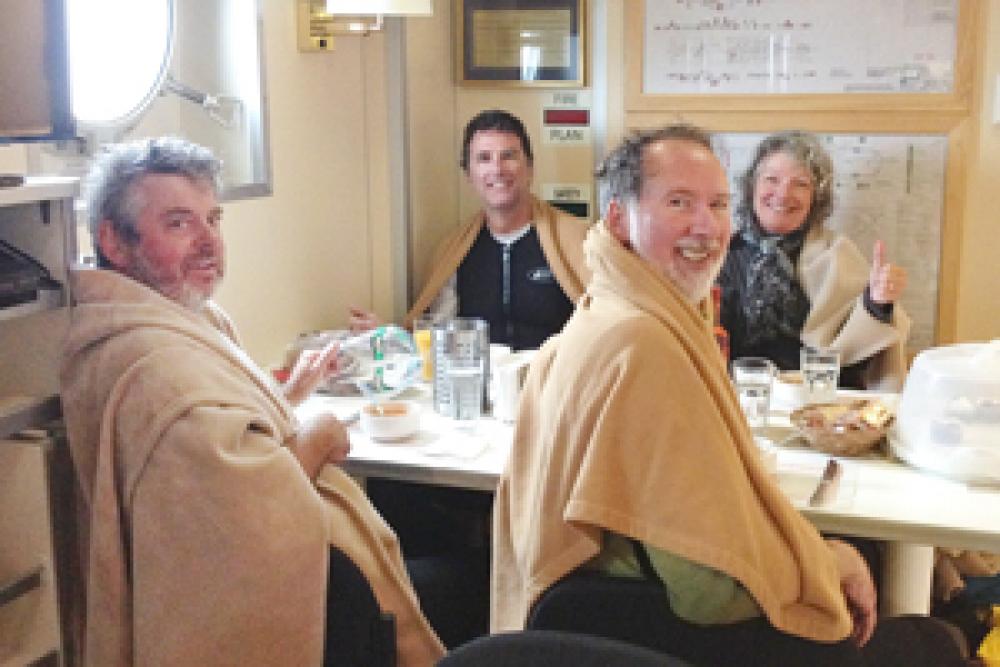
Close Call for Four Kayakers
A sea kayak expedition could have ended in disaster on August 26, 2015, if the Canadian Coast Guard had not been there to lend a helping hand.
It all started when four people paddling three sea kayaks (two singles and a double) left Port-Menier heading west. When the kayakers got to the western tip of Anticosti Island, strong winds (20–25 knots) and a tidal current pushed them out to sea. Friends, who were following them on bicycles along the shoreline, quickly realized they were in trouble and unable to make it back to shore.
Sea kayaks are very vulnerable boats. When the wind and current are working against them, even the most athletic kayakers cannot paddle hard enough to make it to their destination or a safe location.
A distress call was quickly sent to the Quebec City Marine Rescue Sub-Centre, which transferred the call to the des Escoumins Marine Communications and Traffic Services Centre so that they could transmit a distress relay alert via marine radio. Before long, the witnesses on land lost sight of the kayakers.
Congrats to CCGS A.LeBlanc, Cap de Rabast and Teleost crews for the rescue of kayakers near Anticosti pic.twitter.com/yZmANP1kWz
— MPO GCC Québec (@MPO_GCC_Quebec) 4 Septembre 2015
As soon as the distress relay was issued, three Canadian Coast Guard ships, the CCGS Cap de Rabast, the CCGS Teleost and the CCGS A. LeBlanc, headed to the search area. Because these ships were several hours away from the site, National Defence was called in to assist. A Hercules aircraft and a Cormorant helicopter were dispatched to the scene.
In only a few hours, the kayakers had drifted 4.5 nautical miles northwest of Pointe-aux-Anglais, right in the middle of the commercial shipping lane running through Jacques Cartier Strait. When the Hercules pilot spotted the kayakers, he set off a flare to help a merchant ship in the vicinity identify their location.
The three Canadian Coast Guard ships successfully converged on the kayakers’ position. The A. LeBlanc found them, still aboard their kayaks and dehydrated. They were rescued, given food and taken ashore three and a half hours after the initial distress call – to their great relief and that of their friends.
- The Quebec City Marine Rescue Sub-Centre is responsible for coordinating operations involving incidents at sea or on waters monitored by the Canadian Coast Guard.
- The des Escoumins Marine Communications and Traffic Services Centre monitors emergency and distress frequencies on the maritime radio band. It is responsible for monitoring marine communications, including communications during search and rescue operations. When a life or death situation occurs at sea, the Centre broadcasts a message, known as a distress relay, via its antennas located all along the coast. Ships that receive this message are then required to respond and head to the coordinates of the distress location.
Victor Chiasson-LeBel
Canadian Coast Guard

Kayakers finally safe.





